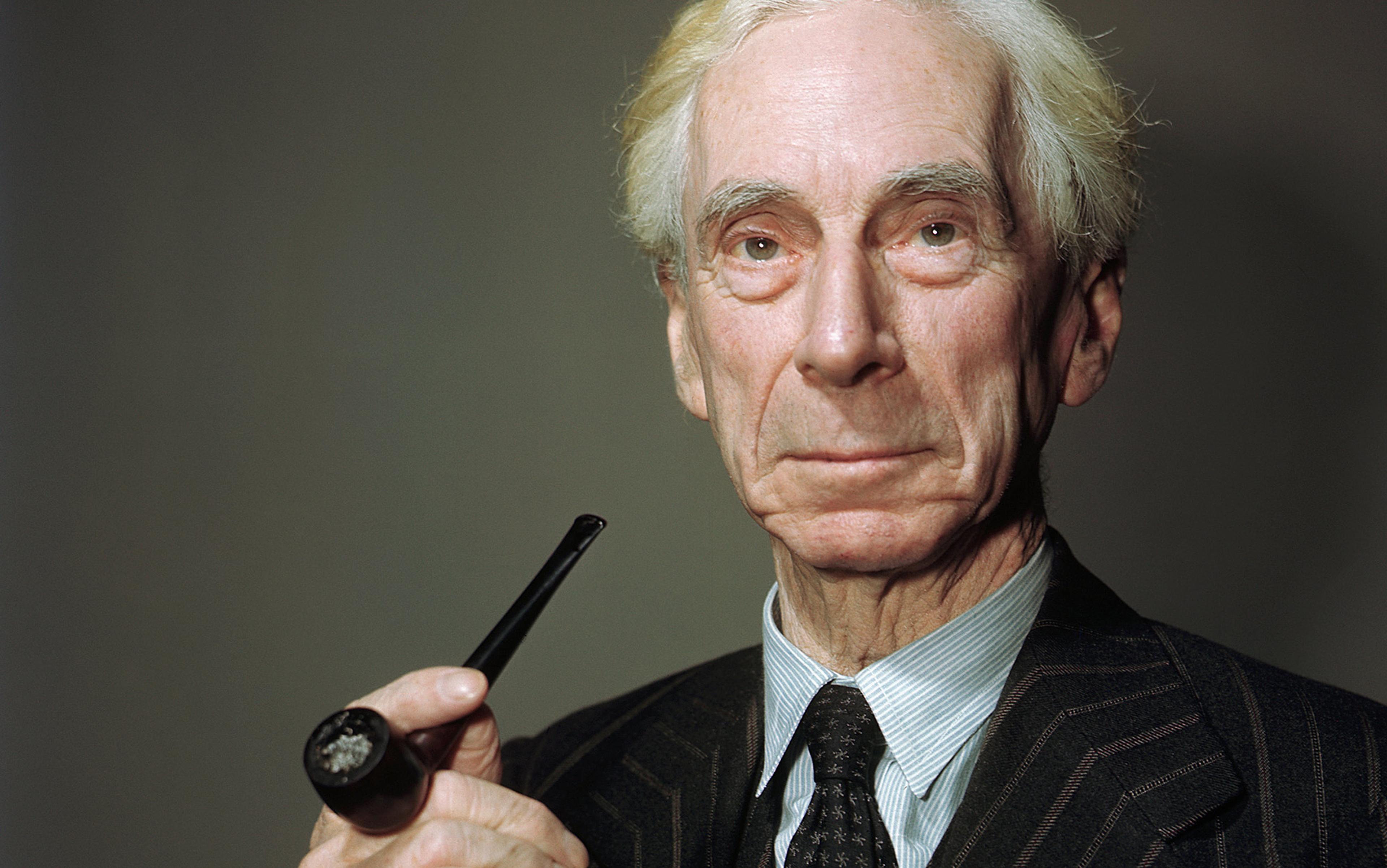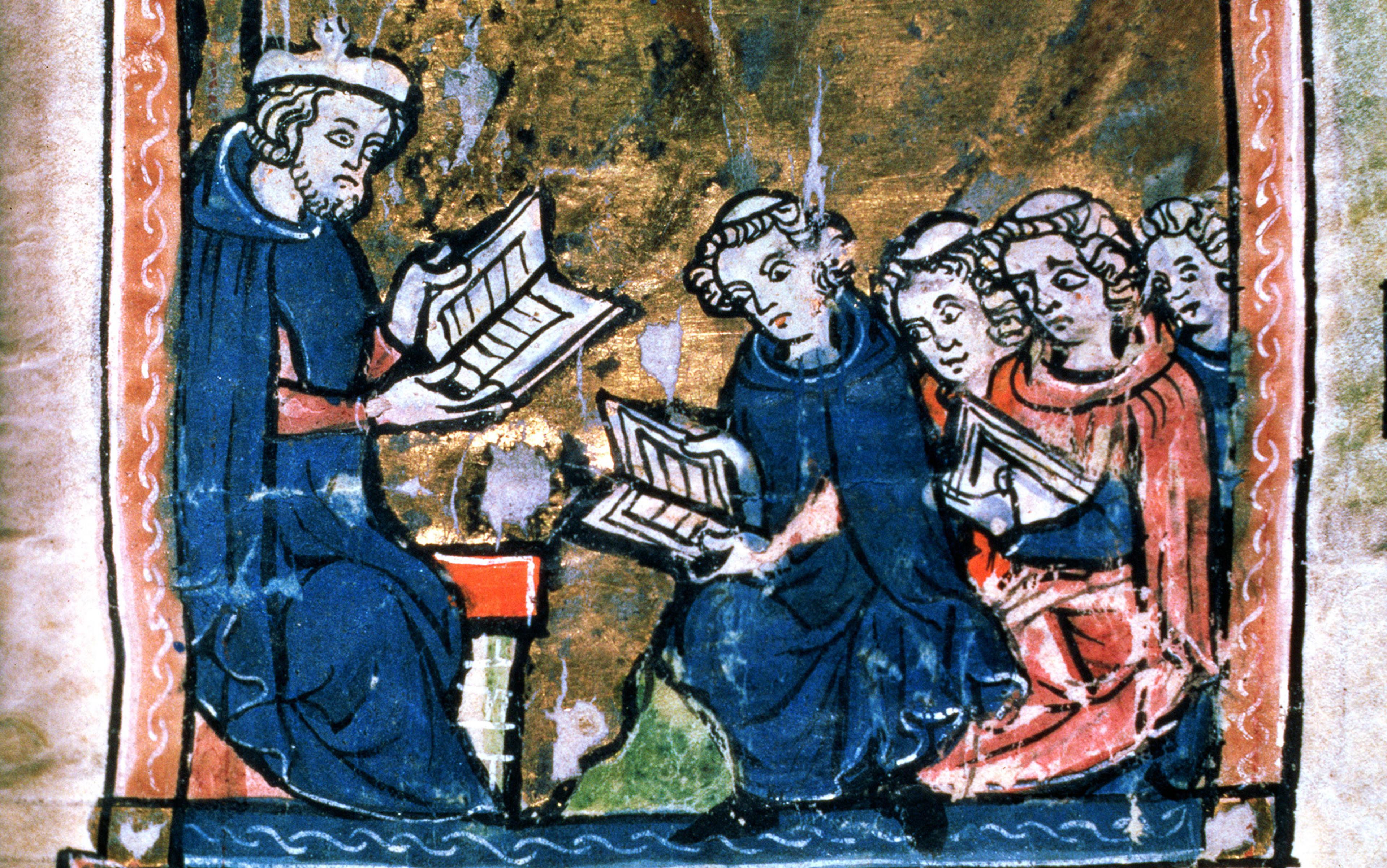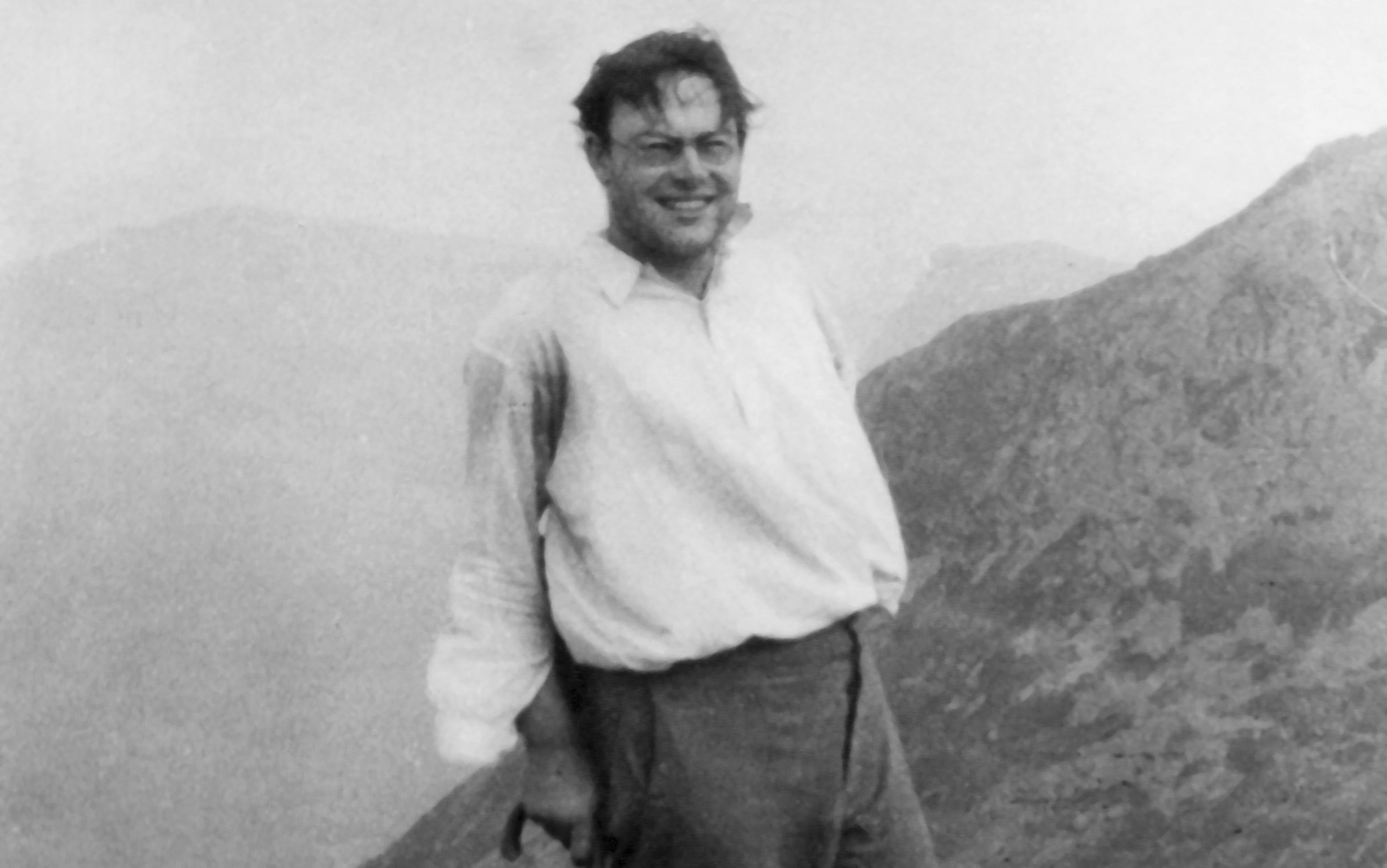At the dawn of the 20th century, there emerged in the United States a distinctive philosophical movement known as pragmatism. Although the term is often used today to denote the blunt desire to get results, the founders of pragmatism – Charles Sanders Peirce (1839-1914), William James (1842-1910), John Dewey (1859-1952), Chauncey Wright (1830-75) and Oliver Wendell Holmes Jr (1841-1935) – were subtle thinkers. Each made significant contributions in areas ranging from logic, epistemology, philosophy of language, legal philosophy, philosophy of science, ethics, aesthetics, philosophy of religion and political philosophy. Despite their differences, they were animated by a common interpretation of philosophical empiricism that emphasises the role of action in our thinking, from the habitual and mundane to the experimental and creative. The core of pragmatism is Peirce’s ‘pragmatic maxim’, which proposes to analyse the meaning of our concepts by looking to how they guide action.
It is fitting that one of the earliest books about the development of pragmatism should be titled Meaning and Action (1968). In that work, the American philosopher H S Thayer presented a view of pragmatism’s founding that has become standard:
Pragmatism is a method of philosophising often identified as a theory of meaning first stated by Charles Peirce in the 1870s; revived primarily as a theory of truth in 1898 by William James; and further developed, expanded, and disseminated by John Dewey.
There are two tightly related ideas at play here. First, there is the view that Peirce and James formulated versions of pragmatism that are partial precursors to the systematic pragmatism of Dewey. Second, there is the notion that the story of pragmatism’s founding is the story of philosophical differences withering away, unifying in Dewey’s philosophy. This developmental view of the history of pragmatism is wrong.
One needn’t scour pragmatism’s initiating documents in order to identify points of substantive disagreement among Peirce, James and Dewey. Pragmatism was founded amid a well-known dispute between Peirce and James over its central idea, the ‘pragmatic maxim’. Peirce proposed the pragmatic maxim as a tool for dispensing with metaphysical nonsense; for him, pragmatism was strictly a ‘method of ascertaining the meanings of hard words and abstract concepts’. The core of this method is the idea that we must look to the upshot of our concepts in order to understand them.
To get a sense of how the pragmatic maxim operates, consider one of Peirce’s own applications: the Catholic doctrine of transubstantiation. This is the view that in the Mass, bread and wine are metaphysically transformed into the body and blood of Christ, despite there being no change at all in their sensible properties. In what, Peirce asks, could this transformation consist? His answer is that the very idea of something being blood but in every conceivable way being empirically indistinguishable from wine is nonsense, ‘senseless jargon’. By insisting that words and statements be analysed according to ‘what is tangible and conceivably practical’, Peirce aspired to ‘dismiss make-believes’ from philosophy, and thereby set upon the path of proper enquiry.
James was dissatisfied with Peirce’s formulation of the maxim. Instead, he proposed a broader rendition according to which the point of pragmatism is not to dispel metaphysical nonsense, as Peirce had alleged, but rather to settle metaphysical disputes. James proposed that one should include among the practical effects of a statement the psychological impacts of believing it. Whereas Peirce argued that the pragmatic maxim exposes the meaninglessness of the doctrine of transubstantiation, James thought that pragmatism afforded a decisive case in favour of it. The idea that one can ‘feed upon the very substance of divinity’ has ‘tremendous effect’ and thus is the ‘only pragmatic application’ of the idea of a substance. For James, the pragmatic maxim serves to resolve rather than dissolve longstanding philosophical debates.
This difference regarding the pragmatic maxim underlies a monumental dispute between Peirce and James over truth. Peirce argued that a belief is true if it would be ‘indefeasible’; or perfectly satisfactory; or would not be improved upon; or would never lead to disappointment; or would forever meet the challenges of reasons, argument and evidence. James meanwhile set out his view on truth and objectivity thus:
Any idea upon which we can ride … any idea that will carry us prosperously from any one part of our experience to any other part, linking things satisfactorily, working securely, simplifying, saving labour, is … true instrumentally.
‘Satisfactorily,’ for James, ‘means more satisfactorily to ourselves, and individuals will emphasise their points of satisfaction differently. To a certain degree, therefore, everything here is plastic.’ Peirce did not think that truth was plastic. He told James: ‘I thought your Will to Believe was a very exaggerated utterance, such as injures a serious man very much.’ He scorned what he took to be James’s view: ‘Oh, I could not believe so-and-so, because I should be wretched if I did.’
Dewey contended that the traditional philosophical problems should be simply abandoned as ‘chaff’
When Dewey is brought into the picture, the story of pragmatism is shown to be anything but straightforwardly developmental, where one philosopher’s thought naturally leads to the next one’s. According to Dewey, pragmatism was neither in the business of dismissing nonsense nor of settling metaphysical disputes. He sought a way of doing philosophy that was unhindered by the traditional puzzles and problematics. He resisted the Peircean strategy of proposing a test of meaning and, instead, socialised philosophy, arguing that the traditional philosophical problems naturally arose out of the social and intellectual conditions of a pre-Darwinian age.
Dewey contended that, since these conditions no longer obtain, the traditional philosophical problems should be simply abandoned as ‘chaff’, replaced by new difficulties arising from Darwinian science. In Dewey’s view, Darwinism shows that the world contains no fixed essences or immutable natures. This realisation sets the problem of revising our philosophical and moral ideas so that they are better suited to serve as tools for directing change. According to Dewey, the leading philosophical problem for a post-Darwin epoch is that of keeping our values in step with our technological power, so that they might guide society towards greater freedom.
In this respect, Dewey breaks decisively with James: his pragmatism is not aimed at resolving disputes, but rather at showing that nonpragmatic philosophical programmes are nonviable. Here, Dewey might at first seem allied with Peirce, but Dewey’s stance towards the philosophical tradition is more extreme. To be sure, Peirce’s maxim would have it that many traditional metaphysical statements are nonsense; however, it also leaves a great number of philosophical debates standing. For example, Peirce thought that the dispute between nominalism and realism (does reality consist only of concrete particulars or is generality real as well?) was a real and important philosophical dispute. He proposed his maxim as a way to ensure that such legitimate philosophical debates could proceed profitably. Metaphysics, ‘in its present condition’, is a ‘puny, rickety, and scrofulous science’, but it need not remain so. The pragmatic maxim will sweep ‘all metaphysical rubbish out of one’s house. Each abstraction is either pronounced gibberish or is provided with a plain, practical definition.’
Dewey, by contrast, aimed his criticisms not at specific statements, but at entire philosophical programmes. He dismissed Cartesianism, Kantianism, Humeanism, Platonism, Aristotelianism and nearly every other philosophical school as instantiations of the common defect of employing some or other archaic dualism. Again, Dewey’s charge is that all such approaches are obsolete: not meaningless, but unfit and useless tendencies to be gotten over. Whereas Peirce saw pragmatism as a rule for conducting philosophical enquiry, Dewey saw pragmatism as a philosophical programme for restructuring philosophy and society.
These philosophical differences were well recognised by the classical pragmatists themselves. The work of James and those he influenced led Peirce in 1905 to officially renounce the term pragmatism; he rebaptised his philosophy pragmaticism, a name he hoped was ‘ugly enough to be safe from kidnappers’, which it certainly was. Dewey also strenuously distanced himself from James’s theory of truth. In personal correspondence with Dewey, Peirce complained that Dewey’s philosophy was ‘too loose’ and employed too many ‘slipshod arguments’.
To be clear, the account we have just offered leaves aside many crucial details. However, what has been registered is enough to show that it is an error to present pragmatism as a doctrine initially proposed by Peirce, refined by James, and culminating in Dewey’s writings. Rather, what one finds in the classical pragmatists is a series of substantive disputes about enduring philosophical topics, including meaning, truth, knowledge, value, experience and the nature of philosophy itself.
There is another common misunderstanding about the history of pragmatism that is best articulated by the more recent pragmatist Richard Rorty:
Along about 1945, American philosophers were, for better or worse, bored with Dewey, and thus with pragmatism. They were sick of being told that pragmatism was the philosophy of American democracy, that Dewey was the great American intellectual figure of their century, and the like. They wanted something new, something they could get their philosophical teeth into. What showed up, thanks to Hitler and various other historical contingencies, was logical empiricism, an early version of what we now call ‘analytic philosophy’.
In other words, his popular ‘eclipse narrative’ (as we’ll call it) holds that pragmatism dominated professional philosophy in America throughout Dewey’s heyday, from the early 1900s until the early ’40s. Then, largely due to the war in Europe and the resulting influx of academics to the US, professional philosophy in the US took a ‘linguistic turn’ and began fixating on the technical and methodological issues that today are associated with ‘analytic philosophy’, a tradition originating in the work of Gottlob Frege in Germany; Bertrand Russell, G E Moore and Ludwig Wittgenstein in England; and Rudolf Carnap and Moritz Schlick in Austria.
Rorty took the new analytic philosophy to have been a malignant force in American philosophy departments, an invasion that displaced pragmatism. Crucially, the displacement is said to have been achieved not by way of a critical engagement with the pragmatists’ arguments and commitments, but instead simply by declaring pragmatism soft and insufficiently rigorous. Pragmatism was, in this telling, eclipsed as philosophers in the US began taking their intellectual cues from the analytic philosophers. Having gained strongholds in nearly all the elite PhD-granting universities in the US, the analytics swiftly trained the next several generations of professional philosophers. Pragmatism, America’s homegrown philosophy, thus was driven underground, where the remaining loyalists built scholarly networks devoted to keeping the classical idiom alive.
A more reliable strategy for marginalising the classical pragmatists could hardly be imagined
Yet there is also a resurrection in the eclipse narrative. It goes on to say that analytic philosophy eventually proved itself too self-absorbed and socially irrelevant to be sustainable. Recovering from the analytic fad, philosophers in the US, notably Rorty, Hilary Putnam and Cornel West, rediscovered pragmatism in their landmark works of the 1970s and ’80s. Hence ‘neo-pragmatism’ came to the fore as a leading ‘post-analytic’ development in professional philosophy. The eclipse seems to have been undone.
Well, not quite. The resurrection story is tinged with resentment. It is alleged that neo-pragmatism is too analytic and not closely tied to the classical texts. It has drifted off course, not authentically pragmatist. Pragmatism’s resurrection occasioned a second eclipse: although the philosophical mainstream is now once again attuned to some of the vocabulary and ideas of pragmatism, it has received them in the corrupted form promoted by the neo-pragmatists. On this view, classical pragmatism remains unjustifiably occluded.
Consequently, there is a growing literature devoted to repackaging Dewey’s pragmatism. Work in this genre embraces the tacit assumption that nonpragmatists are simply ignorant of pragmatism; accordingly, a recurring theme is that Dewey’s philosophy must be rediscovered so that it can ‘revitalise’ mainstream philosophy. The steady production of volumes devoted to establishing Dewey’s ‘continuing relevance’, ‘discovering’ his ideas and recapturing his ‘lessons’ is suggestive.
The upshot, tragic for the prospects of pragmatism, is that the resulting stance amounts to a principled insularity. Moved by an account of their past that fixates on an alleged persecution, and convinced that there have been no advances since Dewey, the loyalists to the classical idiom embark on a project of retrieval that instructs them to talk mostly among themselves about the hard times upon which pragmatism has fallen. A more reliable strategy for marginalising the classical pragmatists could hardly be imagined. But much of the eclipse narrative is itself misguided.
This interpretation of the history of pragmatism relies upon the claim that the analytic philosophy that arrived in North America in the 1930s and ’40s (which took the names ‘logical empiricism’ and ‘logical positivism’) was antithetical to pragmatism. This is not accurate. There were remarkable similarities between pragmatism and logical empiricism, and each tradition evolved in light of the other.
When the logical empiricists arrived in the US, they found a soil in which their position could thrive. They did not arrive in a land that was inhospitable to their view, nor did they need to uproot the view they found already planted there. As the logician Ruth Barcan Marcus said of her time as a graduate student in the New York University Philosophy Department, which was chaired for several decades by Dewey’s most prominent student, Sidney Hook: ‘pragmatism thrived in harmony with logical positivism and its variants, logical empiricism and scientific empiricism’. She graduated in 1941, but Hook chaired the NYU department until 1969, and it retained its pragmatist character.
The logical positivists argued that philosophy must put itself into scientific language and render itself clear. Most of the purported answers to age-old questions will then be shown to be fruitless and meaningless, as they aren’t reducible to observation statements. They are not empirically verifiable and so they are ‘pseudo-propositions’. Note the clear similarities with Peirce’s pragmatic maxim, as well as the commitment, also found in Dewey, to recast philosophy in light of current science.
Both logical positivists and pragmatists were suspicious of the metaphysics of the correspondence theory of truth
Even more striking is the fact that the epistemology and the view of truth that featured heavily in analytic philosophy from the 1930s logical empiricism right through to its heyday in the 1950s and ’60s was in fact pragmatism. In 1932, Otto Neurath put the insight at the heart of his view of truth and knowledge in terms of a classical metaphor. It was to become a famous, and widely endorsed, image:
There is no way to establish fully secured, neat protocol [observation] statements as starting points of the sciences. There is no tabula rasa. We are like sailors who have to rebuild their ship on the open sea, without ever being able to dismantle it in dry-dock and reconstruct it from its best components.
Peirce provided a metaphor with precisely the same message: he likened enquirers to persons walking on a bog, saying only ‘this ground seems to hold for the present. Here I will stay till it begins to give way.’ Knowledge is fallible and we make revisions when the force of experience causes a particular belief or theory to be thrown into doubt. As one of the logical empiricists, Hans Hahn, put it: ‘As against the metaphysical view that truth consists in an agreement with reality – though this agreement cannot be established – we advocate the pragmatic view that the truth of a statement consists in its confirmation.’ In short, both the logical positivists and the pragmatists were suspicious of the metaphysics of the correspondence theory of truth, with its inaccessible things-in-themselves. They both sought a theory of truth on which true statements were those that were verifiable and successful.
Indeed, post-war analytic philosophy in the US was dominated by the students of the great pragmatist Clarence Irving Lewis (who himself was most like Peirce). In his time at Harvard, Lewis taught three giants of later 20th-century philosophy – W V O Quine, Wilfrid Sellars and Nelson Goodman, all pragmatists who happened to be shy of adopting the label, lest they be associated with James and Dewey. For his part, Dewey trained several luminaries of the period; notable among these are Hook and Ernest Nagel who both championed pragmatism while maintaining prominent positions of influence within the profession. It is worth noting that they both held the prestigious role of president of the Eastern Division of the American Philosophical Association during the years of pragmatism’s supposed eclipse – Nagel in 1954, Hook in 1959.
To be sure, in examining professional philosophy throughout the latter half of the 20th century, one finds a gradual waning of the influence of Dewey’s own philosophy. However this in no way signals the waning of pragmatism as such, as pragmatism does not find its culmination in Dewey.
As the eclipse narrative casts pragmatism as the casualty of a foreign invasion, it is committed to the idea that pragmatism exerted little influence over the analytic philosophers abroad. The part of abroad that was (and is) supposed to be most hostile to pragmatism is England. Certainly, one distinguished philosopher there was not impressed with one brand of pragmatism. Russell said that James’s book Pragmatism (1907) ‘is like a bath with hot water running in so slowly that you don’t know when to scream’; he also claimed that Dewey was ‘a good man but not a very clever one’.
Russell could be nasty. But in fact, he was not entirely dismissive of pragmatism. He respected Peirce, who, like Russell himself, was an outstanding logician. Russell learned a lot about Peirce in 1914, while visiting Harvard to give the Lowell Lectures. Peirce was the talk of the department while Russell was there, partly because he died in the middle of Russell’s visit. Russell was asked, and agreed, to return to Harvard to teach a seminar on Peirce and to edit the first volume of his posthumously collected papers, but the First World War intervened, with Russell ending up in jail for his anti-war activities. But he remained interested. His The Analysis of Mind (1921) explored, in a positive way, the pragmatist idea that belief is a disposition to behave.
Moreover, the young and brilliant Frank Ramsey, who came on the Cambridge philosophical scene in the early 1920s, was a card-carrying pragmatist. He had pragmatist leanings from the beginning of his undergraduate days, encouraged he said, by Russell. In 1923, he read the first volume of Peirce’s posthumously collected papers and his pragmatism grew in strength and scope. Importantly, Ramsey is the analytic philosopher’s philosopher, making stunning contributions to the philosophy of language, logic and truth theory.
Ramsey picked up on the pragmatist idea that we should not try vainly to offer a proof of, say, induction, but rather, we should vindicate it by showing how it is essential to practice. He also gave pragmatist or agent-centred treatments of probability, causality and scientific laws. He argued, with Peirce, that belief is a habit of action, and employed that idea in figuring out how to measure partial belief and formalise choice. He was attracted to Peirce’s account of truth and died (at age 26) in the middle of writing a book that was trying to work that out.
Pragmatist arguments and concerns pervade the analytic philosophy that reigned in Oxford and Cambridge
In 1929, the year before he died – and the year that Wittgenstein returned to Cambridge after his self-imposed exile as a school teacher in Austria – Ramsey pressed his pragmatist arguments against Wittgenstein’s Tractarian theory that language pictures the world, and that what cannot be said in Wittgenstein’s logical language is a kind of nonsense, sometimes of mystical significance. Wittgenstein’s later philosophy, formulated in his Philosophical Investigations (1953) and other writings, is also arguably a kind of pragmatism with its emphasis on the primacy of practice and meaning as use. As Wittgenstein acknowledged, he was heavily influenced by Ramsey.
In subsequent decades, these two pragmatist approaches – Ramsey’s and the later Wittgenstein’s – led very different lives in British philosophy. Wittgenstein was famously influential, especially in Oxford. Ramsey was quietly influential, especially in Cambridge. Generations of Cambridge philosophers rediscovered his insights, often piecemeal and usually without an appreciation of where Ramsey himself had got them. Nonetheless, pragmatist theses, arguments and concerns pervade the analytic philosophy that reigned in Oxford and Cambridge throughout the second half of the 20th century. Thus the eclipse narrative fails not only as an account of the fortunes of pragmatism in the US, but also of the fortunes of pragmatism in England.
As against Rorty and those who endorse the eclipse narrative, pragmatism has in fact been influential and enduring. Of course, things are different with respect to the term ‘pragmatism’. In the US, it fell out of favour, and it never really caught on in England. It must be remembered, however, that its meaning has been contested ever since Peirce and James clashed over the pragmatic maxim. Indeed, by 1925, Dewey himself had largely dropped it. One reason for the term’s falling out of favour is clearly expressed by Quine, who in 1981 declared it disposable on the perfectly suitable grounds that it ‘draws a pragmatic blank’.
But pragmatism was never a matter of labels. The pragmatic maxim is itself a kind of indictment against the power that labels can exert over our intellect. Rather, pragmatism has always been a series of disputes among a certain stripe of empiricist philosophers about truth, meaning, enquiry and value. With a clearer sense both of pragmatism’s history and the history of analytic philosophy, one finds that pragmatism was not marginalised or eclipsed in the post-Dewey period. Rather, pragmatism has been a constant and dominant force in professional philosophy in the US and elsewhere for nearly 100 years. As far as philosophical idioms go, pragmatism is among the most successful in the history of the discipline.






